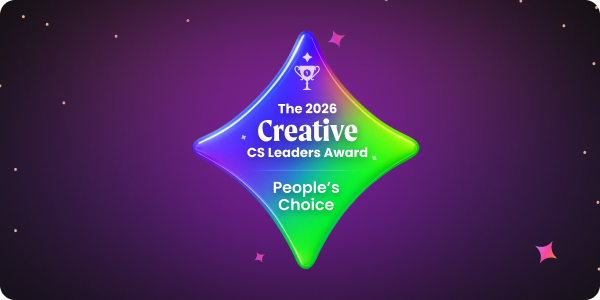TL;DR: Salesloft transformed generic webinar onboardings into personalized customer hubs, achieving 10 hours saved per customer, 4 hours per week saved per consultant, 12-13% adoption increase, and 5-6% setup quality improvement. Key success: AI-powered onboarding paths that let customers self-serve while maintaining consultant focus on strategic conversations. Result: "Best implementation experience ever" customer feedback.
The Onboarding Challenge
Salesloft faced several challenges before finding the right solution for onboarding. Initially, their onboarding relied heavily on a webinar-based model. While this approach worked well to reach a large number of customers, it was difficult to ensure that the sessions were relevant to each customer's unique needs. Customers often found the webinars too general, which led to low engagement and drop-offs after just one or two sessions. Consultants then faced the issue of spending valuable time in live sessions covering basic topics that could have been handled earlier.
Salesloft had a tried-and-tested onboarding model involving a series of webinars. The model scaled well, but there was a catch: it was too generic. Sam, the manager of consulting services at Salesloft, shared, "We had a wonderful webinar-based model that scaled really well... but the gap was that it was more generic." Customers often attended one or two webinars, but drop-offs were common because the sessions did not always address their specific needs.
This meant that, when customers finally met their consultant for a live session, the team spent valuable time covering topics that could have been handled earlier. "The biggest challenge was how to maintain scale while also tailoring the onboarding experience to each customer's unique needs," Sam noted.
.png)
The Missing Link: Personalized Onboarding at Scale
What made this solution unique compared to previous attempts was the combination of scalability and personalization. Salesloft moved away from generic webinars and instead provided an AI-powered onboarding hub that offered tailored content for each customer. This hub included interactive videos, personalized how-to guides, and step-by-step tasks designed to address specific customer needs, making the experience more relevant and engaging for each individual.
The challenge was clear—maintain scale while delivering a tailored experience. They began exploring tools that could help them create a more tailored onboarding experience without losing scalability. According to Sam, "We needed something that could bridge the gap between scale and personalization." They implemented a customer-facing hub that empowered customers to self-serve in a simple and intuitive way. The hub provided personalized onboarding paths based on each customer's role and specific needs, ensuring that the experience felt relevant. It included features such as interactive checklists, customized content, and progress tracking, which helped customers feel supported and guided throughout their journey.
Salesloft built onboarding hubs filled with a mix of video content, text instructions, how-to articles, and tasks—all designed to guide customers step-by-step through the process. This helped customers get started even before their consultant was assigned, ensuring momentum wasn't lost. "If they only have twenty minutes on a Tuesday to dedicate to implementing Salesloft, we want to make sure they can be as productive as possible," Sam highlighted.
Exceptional Results with EverAfter
.png)
The results of implementing the new onboarding hub were significant. During a pilot, Salesloft measured key metrics to evaluate the impact:
- Time Savings: Customers previously had to attend 9-10 hours of webinars to receive all instructions. Now, much of this content is available in bite-sized, easily accessible formats within the hub, saving customers time.
- Consultant Efficiency: The time saved by eliminating webinars allowed consultants to focus on high-value interactions. Each consultant saved 3-4 hours a week, which they could reinvest in more strategic customer conversations.
- Improved Setup Quality and Adoption: Salesloft saw a 5-6% improvement in setup quality and a 12-13% increase in customer adoption metrics. As Sam put it, "As onboarding consultants, our job is to get customers to use. That is your job."
Customer Feedback: The Best Compliment
One of Salesloft's pilot customers expressed that this was the best experience they had ever had when implementing a system. The customer highlighted how the tailored and efficient onboarding process made all the difference in their journey. "That was the biggest compliment and validation that we're on the right track," Sam shared.
{{cta-demo2}}
What's Next for Salesloft and EverAfter?
Having proven the success of this onboarding approach, Salesloft is now exploring expanding its use into other customer programs, including:
- Scaling to Larger Customers: Expanding the onboarding hub to serve enterprise customers with personalized onboarding paths.
- Customer Success Hubs: Using EverAfter to help Customer Success Managers (CSMs) engage customers more effectively, focusing live calls on strategic discussions rather than administrative tasks.
- Everboarding for Existing Customers: Implementing new users or new features requires a unique onboarding process. The concept of "everboarding" is aimed at onboarding existing customers seamlessly when they add new users or features.
Key Takeaways for Exceptional Onboarding
Salesloft's journey shows how crucial it is to empower customers to take ownership of their onboarding journey. Here are a few takeaways for designing effective onboarding:
- Make It Easy to Take Action: Customers should be able to start making progress immediately, without having to wait for human intervention.
- Provide Quick Wins: Early wins keep customers motivated and engaged.
- Tailor the Experience: Personalized content keeps customers interested and ensures they follow through with the onboarding process.
By understanding the customer journey, identifying bottlenecks, and Salesloft has not only improved their onboarding metrics but also made their customers more engaged and successful by focusing on scalability, personalization, and customer empowerment.


.png)

.png)

.png)




%20(1).png)
















.png)
.png)
.png)



.avif)





.png)
.png)







